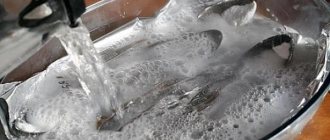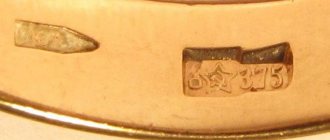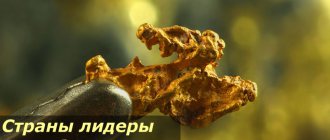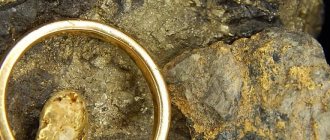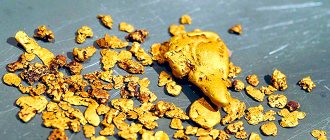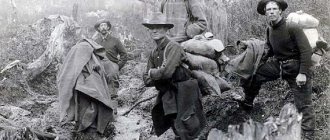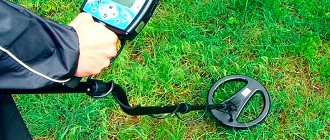In the modern gold mining industry, two methods of obtaining precious metals are actively used. The first method is called hydraulic; it consists of washing gold out of the rock under the influence of a stream of water supplied under high pressure. However, the second method, based on the use of a special machine, is much more effective.
A dredge for gold mining is a huge device the size of a 4-story building and a weight that reaches 1,400 tons. The unit operates afloat, its design includes a whole complex of scoops that lift rock from the bottom of the reservoir, and from this rock by washing get gold ore.
The wide functionality of the dredge allows you to perform the entire range of tasks for the development of placer deposits, starting with the extraction of rock and its delivery to the washing site and ending with waste disposal.
To operate this colossus, the simultaneous efforts of 9 people are required, but the productivity of the device is simply amazing, it is equal to the efforts of 12 thousand miners, “armed” with primitive trays.
Types of dredges for gold mining and principles of their operation
The units that became the topic of our conversation come in two types: continental and marine. The design of both types is almost the same: a floating vessel, masts, equipment for scooping rock, a device for maneuvers, equipment for enrichment. The main difference lies perhaps in the absence of stalkers and piles in marine dredge models.
Continental dredge models are used to study and develop deposits on the mainland adjacent to a body of water. Such devices are based on pontoons. Marine models are used for gold mining, as well as for the extraction of all kinds of minerals and diamonds. Similar equipment is installed on ships, not only on towed ones, but also on self-propelled ones.
Important
Mini-dredges for gold mining have become very popular today.
In appearance, the device resembles a vacuum cleaner that sucks up sand mixed with ore and then separates it. The weight of such equipment varies from 24 to 90 kg, design features may be different, the following components and assemblies are the same:
- system providing buoyancy;
- a motor that drives a centrifugal pump;
- a chute designed for washing and separating rock;
- injector;
- air supply system (only on some models).
Speaking about the principle of operation of a dredge for gold mining, it is necessary to mention the following: a stream of water under enormous pressure is supplied to the injector. Rock (pebbles, sand, etc.) is drawn into it along with water and directed to the grid of the rinsing chute. The motor drives a pump that helps sift the gold from sand and debris.
Washing of placer samples on a cradle, rocker or butara
The cradle (Fig. 180) is a wide, shallow box without a back wall.
Its head part is made in such a way that the water entering the device through the partition flows out in a wide stream, equal to the width of the cradle in the front part. The bottom of the cradle is made dense and even. To supply the cradle with water, a barrel or chest is installed near its head, connected to it by a gutter. The rock is poured onto the bottom of the cradle in the amount of two valleys - 0.04 m3, after which a stream of water is released along the gutter. The washer, standing at the bottom of the cradle, mixes the rock with a paddle, moving a large part of it to the tail of the device. In this case, gold or other heavy mineral tends to occupy the lower position and is located at the bottom of the cradle. When there is little rock left on it, the washer reduces the water supply and, using a plank, then a brush and, finally, a palm at the bottom, carefully finishes it, leaving only the heavy fraction - the concentrate.
Washing on a cradle is much more productive than tray or bucket washing.
The rocker device is similar to the cradle device. An essential feature of the rocker is the device for rocking it, which helps wash away small pebbles (Fig. 181).
Butara (Fig. 182) is a three-walled box made of 40-50 mm boards, the bottom of which is equipped with transverse plinths (stencils). A horizontal screen is placed on the butara receiver, onto which the washed material is loaded. The screen is used to separate large (usually more than 10-12 mm) pebbles and to abrade clay; the small change falls through the holes onto the plane of the butara.
The separated pebbles are classified by size on screens; Each class is measured. Based on these data, the percentage of rockiness of the placer and the ratio of boulders and pebbles of different sizes in it are determined.
Water is supplied to the butara through a gutter or pipe. After passing through the screen, it flows down the plane of the butara, taking with it lighter particles. Heavy minerals and metal particles remain on the surface and near the skirting boards of the butara, from where they are carefully collected after washing the sample. To more completely capture gold, platinum and other useful components of the placer, the surface of the butara is covered with specially made rubber mats, felt or coarse cloth.
The length of the butara is 1750-2000 mm, width 450-600 mm, height 650-850 mm, width of the receiving part at the top is 700-800 mm, at the bottom 450-550 mm. The inclination of the butara is 0.08-0.15. The washing capacity is 3-6 m3 per shift, depending on the washability of the rock. Average drift of gold and platinum is 5-10%; The demolition of cassiterite and wolframite often reaches 30-50%, with the bulk of the losses occurring in small fractions.
When testing placers of cassiterite, scheelite and wolframite, in order to reduce the loss of valuable components when washing samples in trays and on butars, it is recommended:
1) avoid excessive “finishing” of the concentrate, which is always accompanied by the loss of part of the concentrate; 2) thoroughly wash clay lubricants in pebbles; 3) in parallel with washing, manually sort the pebbles removed from the screen to avoid the loss of solid and agglomerative large ore material; 4) load the rock evenly; 5) supply water evenly.
Of the more advanced, Nedelyaev’s butara should be noted (Fig. 183), the characteristic feature of which is wavy sluices. This butara ensures a minimum of heavy mineral drift. Wavy gateways are a pair of ladders that overlap one another so that the higher steps (plinths) of the upper ladder lie between the steps of the lower one. Between the ladders, cloth is placed, taking on a wavy shape, which helps to catch small and even floating gold (Fig. 184). Near the upper baseboards a vortex-like movement of water is created, due to which the smallest particles of gold inevitably become wetted and deposited. In Fig. 184 line C-C shows the path of heavy small particles, and arrows indicate the points of their deposition. Due to this design of the sluices, the removal of gold at the Nedelyaev butara is significantly less than at ordinary butaras.
For mobile, search and prospecting parties working over large areas, especially in the conditions of the taiga pack route in the outlying regions of Russia, Yu.P. Dengin recommended using a camp canvas butara he designed (Fig. 185), the total weight of which is 12 kg.
Sluice a is made in the form of a pipe, stitched along the edges to obtain sockets for two poles, which serve as a rigid support for the sluice leaf. To obtain a flat bottom of the gateway, four spacers are used, which at the same time act as baseboards and press the flooring to the bottom of the gateway. The latter consists of a beaver, wire mesh and a willow mat.
To prevent the wire floor from swelling during the washing process and the willow mat from being lifted by water, three pairs of metal rods are placed under the baseboards. The screen G, enclosed in a wooden frame, is made of galvanized iron. Gateway A and screen D are each installed on two pairs of racks in plug socket D.
The finishing of the concentrate is carried out on a tray. Gold, as Yu.P. points out. Dengin is almost completely captured, with the exception of dust. The bulk of it remains in the upper third of the sluice on the beaver under the wire mat, the marks - in the middle third and single small grains - in the lower one.
Butara productivity in sands with good washability is 0.5 m3/hour. The average water consumption depends on the nature of the material being washed and reaches 0.25 m3/hour. The average slope of the sluice with sand-clay-crushed stone material is 12°. When installing the butara, two auxiliary workers and one washer work at the testing site and at the water supply.
How to pan or mine gold using a dredge
Before using a dredge for gold mining on rivers, a company or enterprise must collect a whole package of documentation and take care of obtaining the appropriate license. In this case, management must comply with a number of requirements:
- first of all - to conduct geological exploration;
- perform an analysis of the quality of the material, perform detailed calculations;
- prepare detailed designs for the development of future fields;
- take care of obtaining an allotment (land and/or mining).
If we are talking about using, for example, a mini-dredge on a private basis, it should be remembered that such activity is illegal and is prosecuted in accordance with the current regulatory framework.
True, this is not an obstacle for many of our compatriots - such a complex, full of adventurism, but, nevertheless, very profitable in some cases, the fishery enjoys considerable popularity in some regions of our state.
Cradle
Veteran, one of the simplest devices for washing sand. Perhaps the simplicity and possibility of making this device with your own hands is its main advantage. Unfortunately, there are more disadvantages:
- Poor performance. Mainly determined by the table area and the size of the perforation. You can increase the size of the perforation, which will increase the size of the under-grid fraction, you need to increase the volume of water, and immediately increase the metal removal. Considering that the water pressure increases on the monitor, there is a risk of metal loss along with the blown off coating from the pebble material.
- Bad disintegration. Completely unsuitable for medium and difficult to wash sands. A lot of small, non-eroded clayey conglomerates containing metal immediately go into the under-grid fraction at the sluice, which are easily carried into the tailings along with the main part of the gold. A cheap device, but the losses are expensive.
Possible application: careful washing of easily washed sands, or careful washing of old, disintegrated dumps.
How to mine gold sand by dredging
The process of washing sand with a dredge:
- The soil, which potentially contains particles of precious metal, is placed in the receiving hole.
- The installation washes the soil, removing excess fractions from it. The latest models of profile equipment are equipped with an automatic flushing function for coarse rock, which eliminates the risk of damage to the device.
- The washed soil is fed into a drum, where it is wetted and crushed into smaller parts.
- The next stage is that the soil is sent to the enrichment sluice, and then the remaining raw materials, which are guaranteed to contain nothing valuable, are thrown back.
The functionality of the dredge for sand extraction provides the ability to make individual settings, in particular:
- intensity of rock cleaning;
- fuel consumption;
- drum rotation speed;
- cleaning method (depending on soil type).
Deroker (according to our GGM)
A very interesting American development, in principle a self-unloading plate screen for bouldering, easily and moderately washable sands with large gold. These are advantages. Disadvantages: heavy, definitely not justified on difficult-to-wash clayey sands, in the basic configuration (only with sluices) it also loses gold in classes 1.0 and below, there are questions about reliability, but this is most likely due to the difficult working conditions on boulders. It would be good in combination with a butara and small filling sluices or something else for small metal. But, in reality, its use is justified if there is really nowhere to go from the boulders, although this is a controversial issue. Everywhere you have to think first.
Dredge cost: current offers
We analyzed the proposals on thematic Internet resources and came to the conclusion that the cost of industrial installations is negotiated on an individual basis.
Important
On the website of manufacturers of such equipment, after a detailed description of the models available for purchase, there is a message that to clarify the price you need to contact the seller.
For example, one of the sites we studied presents a wide range of Julong industrial dredges. The seller offers consumers a wide variety of models - amphibious self-propelled crawlers, mine, bucket, jet suction dredges, portable and stationary installations - the choice is huge, however, in the “Price” column, “Negotiable” is indicated everywhere.
As for options for private use, the situation here is as follows:
- Mini dredge Keene 4500 RN from a reputable American manufacturer, Engineering, costs 450 thousand rubles. The seller, according to the data presented on the website, is located in Krasnoyarsk.
- The Russian-made mini-drag “Nugget-50” costs 139,400 rubles and is sold in the city of Bratsk. A less powerful model from the same manufacturer, “Nugget-40,” costs much less – 75 thousand rubles. All the models we mentioned, according to the seller, are new and are covered by a factory warranty.
Scrubber Butara
A universal device that simultaneously performs both the disintegration function and the function of a self-cleaning screen. If all functions are correctly implemented in the design, the butara scrubber can actually work on gold-bearing sands from easy to difficult-to-wash clayey ones, while providing both high-quality cleaning of pebble material from clay additives along with gold, and good disintegration of clayey gold-containing conglomerates. The main disadvantage is that a good washing complex based on a scrubber cylinder is more expensive than simple devices, but the real gain is also several times greater. But this is all about good scrubbers. Unfortunately, in the bulk of scrubber devices produced today by Russian manufacturers, regardless of their authority and name, as a rule, one of the functions is best implemented, a self-cleaning screen. Scrubber devices, their features, and capabilities were well studied by Soviet science decades ago, but modern mass-produced devices have not implemented even some of the developments of previous years. As a result, the advertised parameters of most modern devices are far from what should be presented today. Heavy, energy-intensive, non-functional devices (for example, PBSh 40, the vaunted PGB-75, may the people of Magadan forgive us, but we must face the truth), do not meet modern requirements and do not solve the pressing problems facing gold miners today. Most of these devices are single-piece, which does not allow simultaneously ensuring both productivity and good preparation of under-grid material of the required condition, without a self-emptying feeder hopper, and are not balanced in energy and water consumption. Some manufacturers in their new products demonstrate the advantages of a friction drive, which begins to slip in conditions of autumn rains and frosts, others declare the high quality of washing clay sands due to various pins in a blind line, they forget that even in the conditions of one field, as it passes through , you may come across both clay pillars and boulders. And the use of a hydraulic elevator in combination with a scrubber device is a mockery of gold in a perverted form. I’ll take it upon myself to say that I couldn’t choose from the offerings at least one device that met the price-quality ratio and could be quickly configured for the required tasks without compromising production. One of the problems of selection is the not entirely correct assumption of colleagues from Irgeredmet that in order to select a device in each individual case, only after their consultation can a specific device be selected. From what is described above. The above describes what you cannot choose from. In fact, both for off-road use you need a jeep, and for placer mining you need to have 2-3 types of mobile scrubber devices, with the main difference only in performance. It’s just that these complexes must have a sufficient number of adjustable and operationally changeable parameters for the purpose of their possible customization for specific tasks. Those. The time has come to have fairly universal modular mobile washing systems.
In fact, it's time to change the emphasis.
Most of the gold flies away because the technology was mainly built for clear, visible large gold. Now there is less and less of it. The bulk of the gold becomes smaller. This means priorities need to change. Basic technologies should ensure the capture of the bulk of gold, i.e. smaller classes. And then the secondary task will be the task of capturing large metals, which in real proportions are much smaller. But this is also a simpler task. And, most importantly, taking into account the fact that the total weight of nuggets from the entire mass of mined gold most often ranges from a fraction of a percent to a percent, and the Gokhran policy in no way stimulates the mining of nuggets, this task, oddly enough, is secondary. With rare exceptions. In at least 6 years of work, we have not come across nuggets larger than 30 g and measuring more than 15-25 mm. Therefore, we have finally become convinced that even if a large nugget is lost somewhere, it is destined to be so. But even a kilogram nugget containing hundreds of kilograms of gold does not play such a role as to lose tens of kilograms of gold for its sake. Back
Before starting work
To carry out work, the company must complete a package of necessary documents and obtain a permit (license). The management of the organization must comply with important requirements:
| No. | Required work |
| 1 | Conduct geological exploration |
| 2 | Analyze the quality of the metal, carry out the necessary calculations |
| 3 | Submit field development projects |
| 4 | Receive mining, land allotment |
When setting up your own company, you should hire workers, purchase equipment and take other measures to organize the mine.
Extraction methods
There are the following options for mining yellow metal:
- manual;
- ore;
- hydraulic;
- using a dredge.
The first method involves washing gold, for example, with a tray. The second is applicable in industrial areas. Its implementation requires permission from the government, expensive equipment, and a mine.
The hydraulic method allows you to erode rocks under the influence of special equipment. The most common method, using a dredge, is used on a small and industrial scale. A mechanized device processes the soil, which presumably contains gold. Gold mining is carried out on land or at sea. Accordingly, a continental or maritime class machine is used.
Both types of machines are approximately the same. The only difference is the presence of piles and a stalker in continental models. Gold mining is considered profitable when 3 g of gold is obtained per 1 ton of rock.
Sunday, April 13, 2014
Gateway for gold washing. Make your own equipment for gold mining.
:
Hello, do you have a washing tray for sale? Thank you, Alexander.
Alexander. Under the advertisement for Sale of Prospector's Tray there is the seller's phone number. Call him. I personally don't sell trays. I can make a gateway, but I can make any of the ready-made materials myself according to the description. Happy searching.
How can I contact you? Can I leave an email or phone number? I want to order a gateway)
My email is in the right column. [email protected]
How to contact you
Vladimir I can’t find your email, I wanted to consult with you
You can ask a question in the comments. I just won't publish it. I will answer your email. Or above your comment is my name. Click
how to make a simple concentrator at home to catch the smallest metal particles
Have you found a way to wash small gold? I can give you some advice.
Could you describe your method? Readers would appreciate it. My mail
How can I contact you about the gateway?
My mail
Near the house in a ravine I tried to wash a lot of pink stones, apparently rose quartz, the shape of the stones has sharp corners, scratches the glass but does not wash off. Then I washed the area and there were also these pebbles, but smaller. Interested in the riffle angle
I can't always respond to comments quickly. I'm sorry. The angle of inclination is not important if taken separately from other factors. What metal? Small? Large? How much silt is in the water? What current? All these are components of success. Only personal experience will dot all the “Is”. After the tenth and twentieth wash, you will understand what you need. After all, I showed the simplest design that can be improved. In the near future I will publish material on how to make a simple concentrator at home to catch the smallest metal particles. The concentrator can also be used while traveling.
Posts 1 page 29 of 29
Share12017-11-14 20:55:24
- Author: Dilettante
- Administrator
- Registered: 2017-08-09
- Invitations: 0
- Posts: 971
- Respect: [+79/-0]
- Positive: [+143/-0]
- Time spent on the forum: 13 days 13 hours
- Last visit: 2021-05-18 06:34:18
The reconnaissance gateway on the stream is clear. The small gateway is easily portable. And if you want to make a volumetric sample or mine gold using the natural flow of water and a shovel.
Share22017-11-14 21:20:50
- Author: Dilettante
- Administrator
- Registered: 2017-08-09
- Invitations: 0
- Posts: 971
- Respect: [+79/-0]
- Positive: [+143/-0]
- Time spent on the forum: 13 days 13 hours
- Last visit: 2021-05-18 06:34:18
One of the options. Easy to manufacture. Moisture-resistant plywood is taken. Or any other plane. Chipboard can be moisture-resistant, but it is rough and when removing gold, it will cling to all the irregularities. You can paint and even putty. Lay down a piece of linoleum. Whatever is at hand. A rubber drag carpet No. 362 is laid on top. It is sold in dimensions of 1000 mm by 800 mm. Cut in half. We get two pieces 500 mm by 800 mm. We put them one after another. We press it from the sides with baseboards. Or like on my scout there are slats on the sides and spacers. Be sure to fix the joint with something, otherwise the second carpet may lift up during work.
Rudolf-Kavchik › Blog › How to make a sluice for washing gold with your own hands.
Part 2. Continued.
For a passage/sluice, the gold-catching mat can be made from any natural fabric, such as burlap, tarpaulin, and even a waffle towel, which housewives use in the kitchen. Rugs and fleecy carpets are not convenient to use, since extracting metal from their pile is problematic. The main purpose of the mat is to ensure that the riffles adhere to the bottom of the sluice so that the accumulated material is not washed away by the leaking flow under the riffles. This has been scientifically proven by leading specialists from the IRGIREDMET Institute.
Industrial enterprises use cellular gold-collecting mats. This is due to the technological process of gold mining. The rock is transported to the industrial equipment by multi-ton Belaz trucks, washing thousands of cubic meters of gold-bearing rock per day. Each Belaz truck contains ten grams of gold, which is brought in for washing every few minutes. It is not profitable for the enterprise to stop the washing process to unload the industrial equipment; this will require stopping production for 2-3 hours, and time is gold, in the literal sense of the word. The industrial device is unloaded once a day. Due to the large amount of washed rock, there was a need for cellular mats with a high profile, which accumulate heavy metal and prevent it from being carried away by the flow of water, which increases the time of effective operation of the industrial device.

